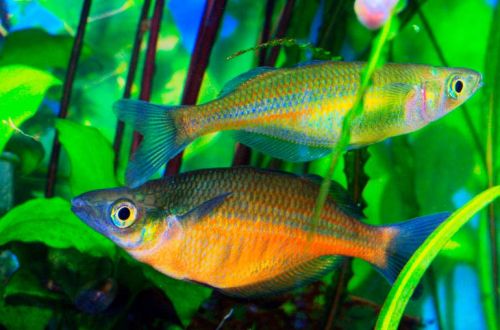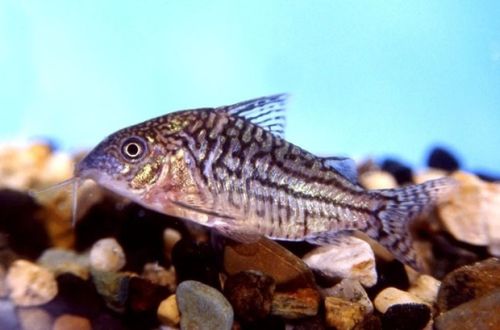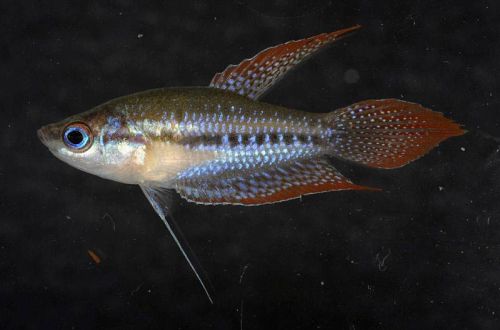
Lake Sentani rainbow
The Lake Sentani rainbowfish, scientific name Chilatherina sentaniensis, belongs to the Melanotaeniidae (Rainbowfish) family. Endemic to Lake Sentani, located in the Indonesian province of Irian Jaya on the island of New Guinea. The island is located in the east Pacific Ocean north of Australia.

It has been mentioned as an aquarium fish since the 1990s. However, according to a study by Gerald Allen, most of the Lake Sentani Rainbows for sale are actually Fasciata Rainbows. Since the 2000s, there has been less confusion with names, but sometimes an erroneous name can be found.
Description
Adult males reach a length of up to 12 cm. Females are about 10 cm. The fish has a laterally compressed body and a pointed head. Body color is silvery blue. The back can be silvery or with greenish tints. The belly shows orange and red colors. Along the lateral line are narrow blue (or green) and orange (or red) stripes interspersed with each other.
Behavior and Compatibility
Peaceful moving fish. Prefers to be in the company of relatives and other related species. Compatible with other fish of comparable size and temperament.
Brief information:
- The volume of the aquarium – from 150 liters.
- Temperature – 24-28°C
- Value pH — 6.5–8.0
- Water hardness – 8–15 dGH
- Substrate type – any
- Lighting – subdued
- Brackish water – no
- Water movement – light or moderate
- The size of the fish is 10–12 cm.
- Food – any food
- Temperament – peaceful
- Keeping in a group of 6-8 individuals
Maintenance and care, arrangement of the aquarium
The optimal size of the aquarium for a flock of 6-8 fish starts from 150 liters. The design is recommended to provide open spaces for swimming and several areas with shelters from thickets of plants and natural snags.
The water in Lake Sentani, due to the numerous tributaries, has an unstable composition, which also depends on the season of the year. Thanks to this, the fish have adapted to life in a wide range of pH and GH values, which simplifies the process of water treatment during aquarium maintenance.
Maintenance is standard and consists of several mandatory procedures, such as weekly replacement of part of the water with fresh water and removal of accumulated organic waste.
Food
Omnivorous species. Will accept most popular dry foods, as well as fresh or frozen foods (small zooplankton).
Sources: rainbowfish.angfaqld.org.au, FishBase





